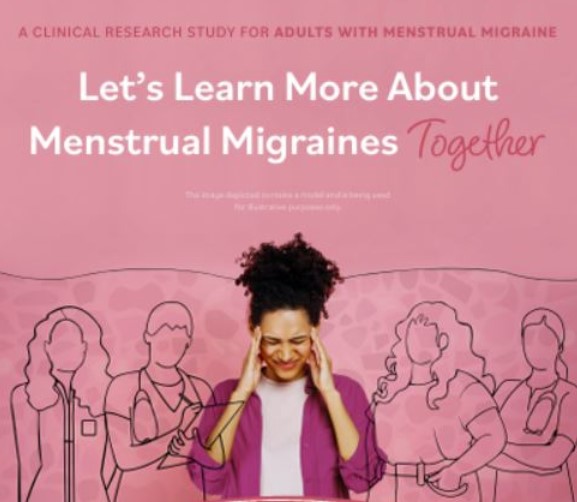Understanding Menstrual Migraines
Menstrual migraines are headaches that occur in relation to a woman’s menstrual cycle. They are often triggered by hormonal fluctuations, particularly the drop in estrogen levels that happens just before menstruation begins. Estrogen plays an important role in regulating bodily functions, when the estrogen level drops rapidly, this can cause a migraine. Estrogen affects the brain’s neurotransmitters, mainly serotonin which aids in pain regulation. Another cause of menstrual migraines is the release of prostaglandins. These are chemicals involved in inflammation and pain. Prostaglandins can determine the severity of the migraine.
These migraines can be more intense and harder to treat than typical migraines, and they are often accompanied by symptoms like nausea, sensitivity to light and sound, and throbbing pain, usually on one side of the head.
Tracking your menstrual migraine triggers
Noting when migraines occur, their severity, duration, and other symptoms for a minimum of three months is important to finding the triggers of one’s migraines. Some physicians will have a person keep a diary to reflect on what is occurring during a menstrual migraine. Four main topics to keep a log of in a diary or journal would be menstrual cycle information such as when and how long a period lasts, migraine occurrence, all potential triggers, and what forms or types of treatments you have taken for relief or interventions.
Impact on daily life
Engaging in regular physical activity can reduce the occurrence of migraines by improving overall circulation and reducing stress. Stress is a known trigger, therefore limiting stress triggers and incorporating relaxation techniques can help reduce the frequency and severity of migraines. Other triggers commonly related to menstrual migraines include mood swings, irritability, and fatigue. Other typical migraine symptoms include throbbing pain, nausea, and sensitivity to light/sound; however, it can last longer and be more severe.
Lifestyle changes
Dietary considerations are a vital requirement to keeping triggers at a minimum. Avoid known food triggers during menstruation such as caffeine, chocolate, and processed foods. These foods can affect one’s brain and body. Caffeine constricts blood vessels in the brain, in return relieving headache symptoms temporarily. However, when the caffeine wears off, the blood vessels dilate, which can trigger a migraine. Chocolate contains natural compounds that affect blood flow and brain chemistry. People who are sensitive to these compounds may have migraines when consuming chocolate. Most processed foods contain artificial additives, high salt content, refined carbohydrates and sugars, all of which are known triggers for some people who suffer with migraines. Exercising regularly, reducing stress, intake of magnesium and vitamins can all be beneficial when dealing with migraines. Being sure to take care of yourself is very important to minimize menstrual migraines.
Take Control
If menstrual migraines severely impact your quality of life, occur frequently, or don’t respond to over-the-counter medications, it’s time to consult a healthcare provider. BTC of New Bedford may assist you with their enrolling clinical trial for menstrual migraines. Understanding and managing menstrual migraines takes time and effort, but with the right treatment plan, many women can significantly reduce their frequency and intensity.

